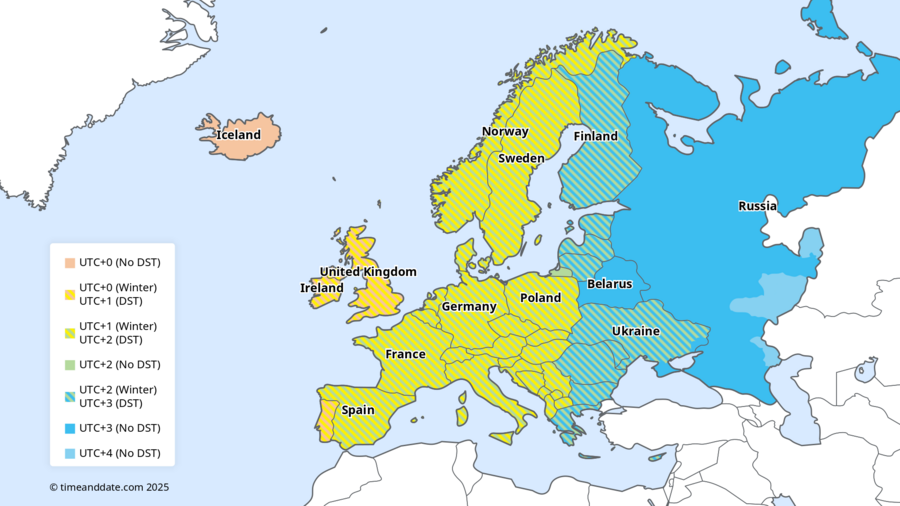
When Do Clocks Change in Europe?
Clocks in most European countries are turned back by 1 hour at 01:00 UTCon October 26, 2025.
Since Europe spans several time zones, the switch from summer time to standard time (also known as winter time or normal time) occurs at different local times—see table further down.
DST in Europe starts again on Sunday, March 29, 2026.
Check your local time for the Europe DST end 2025EU Reconsiders Ending Daylight Saving Time
In 2019, the European Parliament voted in favor of ending the practice of changing clocks twice a year, but the proposal has not been implemented. As of March 2025, the European Commission has confirmed that the plan remains under review.
EU Member states and Members of the European Parliament (MEPs) have time to submit their responses before a final decision will be made. Anna-Kaisa Itkonen, a spokesperson for the European Commission, says:
It is not yet a definitive decision, but we will carefully consider their feedback before making a final determination.
Anna-Kaisa Itkonen, March 2025
eutoday.netThis means the future of Daylight Saving Time in the EU is still uncertain, and the current system—changing clocks on the last Sunday in March and October—remains in place until further notice.
Shorter than in the US and Canada
The US and Canada will end DST a week after Europe, on November 2, 2025.
US clock change in detailDST in Europe is 21 or 28 days shorter than in the US and Canada, depending on the year.
Daylight Saving Time in Europe
European countries coordinate their time changes. Under current EU law, DST starts on the last Sunday of March and ends on the last Sunday of October.
Participating countries are:
Countries that do not have DST include Russia, Iceland, and Belarus.
Current local times in Europe| Time Zone during DST | DST Ends | Standard Time Zone (no DST) |
|---|---|---|
|
British Summer Time (BST), used in the UK during summer. UTC offset: +1 hour |
DST ends at 02:00 (2 am) local time. |
UTC offset: None |
|
Irish Standard Time (IST), used in Ireland during summer. UTC offset: +1 hour |
DST ends at 02:00 (2 am) local time. |
UTC offset: None |
|
Western European Summer Time (WEST), observed in Portugal, the Faroe Islands, and the Canary Islands. UTC offset: +1 hour |
DST ends at 02:00 (2 am) local time. |
UTC offset: None |
|
Central European Summer Time (CEST), used in countries including France, Germany, Austria, Italy, Switzerland, Norway, Poland, Hungary, and Spain. UTC offset: +2 hours |
DST ends at 03:00 (3 am) local time. |
UTC offset: +1 hour |
|
Eastern European Summer Time (EEST), observed in countries including Bulgaria, Estonia, Finland, Greece, Latvia, Romania, and most areas in Ukraine. UTC offset: +3 hours |
DST ends at 04:00 (4 am) local time. |
UTC offset: +2 hours |
|
Most of the western parts of Russia and some parts of Ukraine are in the Moscow time zone, Moscow Standard Time (MSK). UTC offset: UTC +3 hours |
DST not observed, so no DST change. |
No change in time zone. |